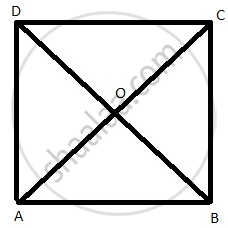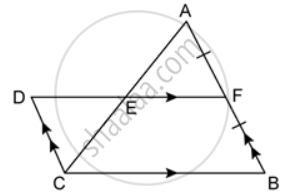Advertisements
Advertisements
Question
In a quadrilateral ABCD, AB = AD and CB = CD.
Prove that:
- AC bisects angle BAD.
- AC is the perpendicular bisector of BD.
Solution
Given: ABCD is quadrilateral,
AB = AD
CB = CD
To prove:
- AC bisects angle BAD.
- AC is the perpendicular bisector of BD.

Proof:
In ΔABC and ΔADC,
AB = AD ...(given)
CB = CD ...(given)
AC = AC ...(Common side)
ΔABC ≅ ΔADC ...(SSS)
∠BAD = ∠DAO ...(AC bisects A)
Therefore, AC bisects ∠BAD
OD = OB
OA = OC ...(diagonals bisect each other at O)
Thus, AC is perpendicular bisector of BD.
Hence, proved.
APPEARS IN
RELATED QUESTIONS
All rectangles are squares
All squares are rhombuses and also rectangles.
Explain how a square is a quadrilateral
Explain how a square is a parallelogram
Explain how a square is a rhombus.
Explain how a square is a rectangle
Prove that the bisectors of the interior angles of a rectangle form a square.
ABCD is a square. A is joined to a point P on BC and D is joined to a point Q on AB. If AP = DQ;
prove that AP and DQ are perpendicular to each other.
In the given figure AF = BF and DCBF is a parallelogram. If the area of ΔABC is 30 square units, find the area of the parallelogram DCBF.
In a parallelogram PQRS, M and N are the midpoints of the sides PQ and PS respectively. If area of ΔPMN is 20 square units, find the area of the parallelogram PQRS.
